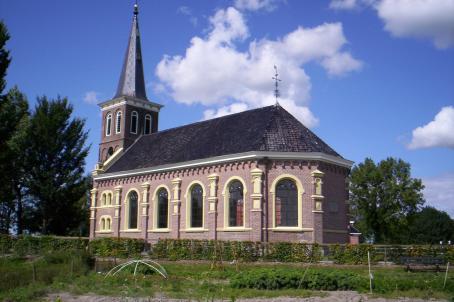Protestantse Kerk
In construction late Gothic building of which the choir closure and south wall were renewed or bricked in the second half of the 19th century. Heavy west tower with niche section in the second and third section and covered by saddle roof. The southern cartouche with coat of arms of Sminia recalls the restoration of the church in 1743. However, the roof was already renewed in 1726. In the church beautiful 17th century pulpit with rear bulkhead and sounding board. Closed baptismal gate and two covered gentlemen's pews. Communion table. Wainscoting. Two pews with baluster railing; forty pews with carved end pieces, two text boards with carved frame; Ten Commandments board with painted representation of Moses with the Tables of the Law in carved frame. Three copper crowns. Two-manual organ made in 1911 by Bakker and Timmenga instead of the Radersma organ that was moved to the Herv. Church in Metslawier. Bell tower with the sound of two bells, one by T. Both, 1590, diam. 125 cm. and one by H. Falck, 1620, diam. 115 cm. Mechanical tower clock D. Wielinga, Franeker, 1922, has been decommissioned.




